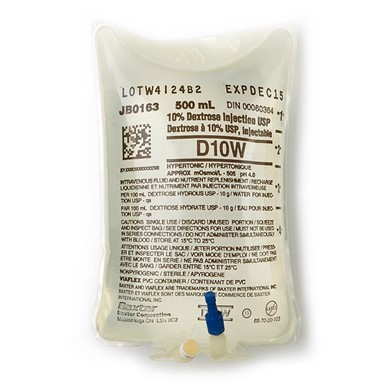A nurse is preparing to insert an IV catheter for a client.
Which of the following actions should the nurse plan to take?
Select a site on the client’s dominant arm
Apply a tourniquet below the venipuncture site
Elevate the client’s arm prior to insertion
Choose a vein that is palpable and straight
The Correct Answer is D
The correct answer is choice D. The nurse should choose a vein that is palpable and straight for IV catheter insertion.
This will facilitate the insertion of the catheter and reduce the risk of complications such as infiltration, phlebitis, or hematoma. A straight vein will also allow the catheter to be inserted up to the hub, which reduces the risk of contamination along the length of the catheter.
Choice A is wrong because selecting a site on the client’s dominant arm can interfere with the client’s mobility and increase the risk of dislodging the catheter. The nurse should choose a site on the client’s non-dominant arm, preferably on the hand or forearm.
Choice B is wrong because applying a tourniquet below the venipuncture site will impede blood flow and make it harder to locate a suitable vein. The nurse should apply a tourniquet above the venipuncture site, about 10 to 15 cm from the insertion site.
Choice C is wrong because elevating the client’s arm prior to insertion will decrease venous filling and make it harder to palpate a vein. The nurse should lower the client’s arm below the level of the heart to increase venous distension.
Normal ranges for IV catheter size and insertion angle depend on several factors, such as the type and duration of therapy, the condition and size of the vein, and the age and preference of the client.
In general, smaller gauge catheters (20 to 24) are preferred for peripheral IV therapy, and larger gauge catheters (14 to 18) are used for rapid fluid administration or blood transfusion. The insertion angle can vary from 10 to 30 degrees, depending on the depth and location of the vein.
Nursing Test Bank
Naxlex Comprehensive Predictor Exams
Related Questions
Correct Answer is B
Explanation
The correct answer is B.
Assist the adolescent in applying for Medicaid.
This action demonstrates the nurse’s role as an advocate and a resource person for the client, who might be eligible for financial assistance and health care coverage during her pregnancy and postpartum period. Medicaid is a federal and state program that provides health insurance for low-income individuals and families.
Choice A is wrong because contacting the adolescent’s parent for assistance might violate the client’s confidentiality and autonomy, especially if the parent is not aware of or supportive of the pregnancy. The nurse should respect the client’s right to privacy and self-determination, unless there is a risk of harm to the client or the fetus.
Choice C is wrong because referring the adolescent to a local mental health clinic might imply that the client has a mental disorder or needs psychological counseling, which could be stigmatizing and discouraging.
The nurse should assess the client’s emotional state and coping skills, and provide supportive and nonjudgmental care. The nurse can also offer referrals to other community resources, such as prenatal education, parenting classes, or social services, that might benefit the client.
Choice D is wrong because advising the adolescent to place the newborn for adoption might interfere with the client’s decision-making process and personal values.
The nurse should not impose his or her own opinions or beliefs on the client, but rather explore the client’s feelings and preferences about her pregnancy options. The nurse should provide factual information and education about adoption, abortion, or parenting, and help the client weigh the benefits and risks of each option.
Correct Answer is D
Explanation

This is because abruptly stopping TPN can cause hypoglycemia, which is a low blood sugar level that can cause shakiness, diaphoresis, confusion, and seizures. Therefore, infusing dextrose 10% in water temporarily at the same rate as the TPN can prevent this adverse effect. Dextrose 10% in water is a hypertonic solution that contains 340 calories per liter and can maintain the client’s blood glucose level until the new TPN bag arrives.
Choice A is wrong because giving 500 mL of lactated Ringer’s solution would not provide enough calories or glucose to prevent hypoglycemia. Lactated Ringer’s solution is an isotonic solution that contains electrolytes but no calories or glucose.
Choice B is wrong because temporarily discontinuing the infusion would cause hypoglycemia, which can be life-threatening for the client.
Choice C is wrong because slowing the TPN infusion rate would also cause hypoglycemia, as the client would receive less calories and glucose than prescribed.
Whether you are a student looking to ace your exams or a practicing nurse seeking to enhance your expertise , our nursing education contents will empower you with the confidence and competence to make a difference in the lives of patients and become a respected leader in the healthcare field.
Visit Naxlex, invest in your future and unlock endless possibilities with our unparalleled nursing education contents today
Report Wrong Answer on the Current Question
Do you disagree with the answer? If yes, what is your expected answer? Explain.
Kindly be descriptive with the issue you are facing.
